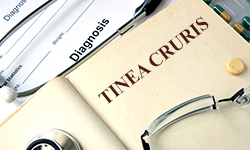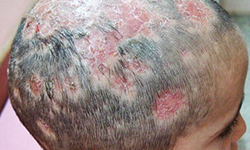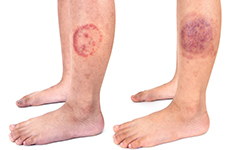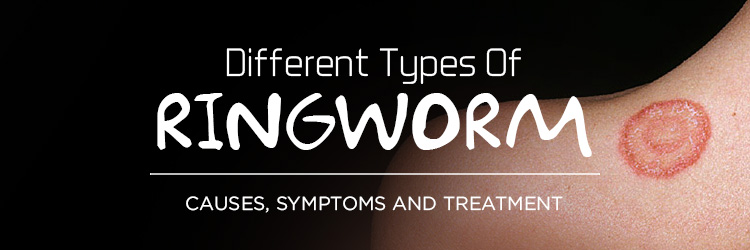Finding an escape from skin infections is a victory. But more often than not they still find a way to crawl back onto our skin if we don’t take good care of it. Ringworm is no different! The growth of fungus on the skin causes ringworm. The fungi that grow on the skin, hair, and nail bed are called dermatophytes and are also referred to as Tinea infections by many doctors across the globe. These tinea infections can be found on the arms, legs, face, and the scalp and are characterized by ring-shaped, red, scaly patches with clear centres. There are many skin care tips that you need to keep a note of to avoid the spread of these various types of ringworm and choose to have a clear, healthy skin. Now, before we understand the different types of ringworm, let’s take a look at which persons are more prone to contract ringworm.
There is a heightened risk of contracting ringworm and other tinea infections if a person has the following symptoms:
- Has poor hygiene
- Lives in a warm climate
- Has contact with other people that have ringworm
- Has low immunity due to disease or medication
- Plays contact sports, such as wrestling and others
- Uses public baths or locker rooms
So, if you have these symptoms, make sure you do everything to keep your hygiene in check and avoid contracting ringworm of any type. A good immune system is also an important part of your skincare kit if you want a healthy-looking skin. Since you are now aware of the causes and symptoms of ringworm, let’s move on to the types of ringworm and their symptoms. The most common types of ringworm are:
1.Athlete’s Foot (Tinea Pedis)

The symptoms of Athlete’s Foot include:
- Discolouration of skin
- Scaling of the feet
- Itchy rashes on the feet
- Blisters on the feet
If you have any of these symptoms, check with your dermatologist for treatment or you can even find a dermatologist near you at the Skin and Hair Academy.
2.Jock Itch (Tinea Cruris)

- Ring-like, red patches in the groin area
- Itching in the groin area
- Pain in the groin area
- Doesn’t usually involve the scrotum
These symptoms are enough to pay a visit to your dermatologist and seek immediate attention and treatment
3.Scalp Ringworm (Tinea Capitis)

The symptoms of scalp ringworm include:
- Red, scaly rash on the scalp
- Itching of the scalp
- Hair loss
- Rashes on the body
Tinea Capitis can even develop into a large, tender lesion over the area that was initially affected with ringworm. This is mainly caused due to hypersensitivity to ringworm and could also be associated with a rash on the body and lymph nodes in the neck. So before it aggravates, it is advisable to get it checked with your dermatologist or physiologist right away.
4.Body Ringworm (Tinea Corporis)

- Red, circular lesion
- Itching of the affected area
There are many symptoms of ringworm that could resemble other diseases and skin conditions so before you take treatment of any kind, make sure you have received the right diagnosis for your skin condition. With so many types of ringworm and tinea infections likely to affect your skin, you should be aware of the treatment for ringworm as well. Hard to cure, different types of ringworm require different treatments and hence getting in touch with your doctor immediately is of the essence. The doctor could prescribe an oral antifungal medication or even ointments and creams to reduce the swelling and eliminate the fungus. If you have any of the above mentioned ringworm symptoms, see your dermatologist right away for treatment. Home remedies or general medications will not effectively work to treat this skin condition and a doctor’s help is needed to ensure you get the right treatment to cure ringworm. If you wish to seek the help of a dermatologist near you, you can find one at the Skin & Hair Academy.














